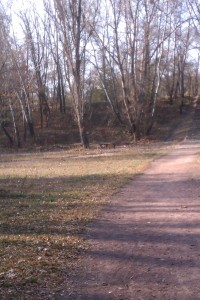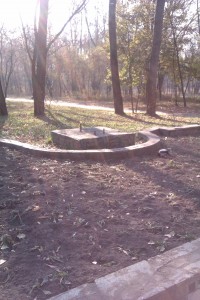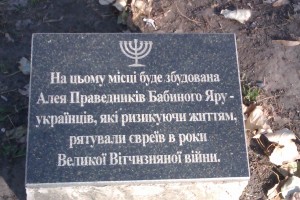

It was always a very scenic area of forests and ravines. A very pleasant green zone on the edge of the city. Picturesque. It was once known as the “Switzerland of Kyiv.” Innocent and bucolic.
All that changed over the course of a couple of days at the end of September 1941. Babyn Yar, on the outskirts of Kyiv, became a global symbol of the Holocaust, and entered the language as shorthand for unfathomable cruelty and unprecedented loss of life.
Babyn Yar was the site of the murder of nearly 34,000 Kyivan Jews that dark September. The killings continued over the next couple of years during the German occupation of Kyiv. With continued shootings of tens of thousands more Jews. As well as the Roma people, the patients of psychiatric hospitals, Soviet prisoners of war, Ukrainian national activists, Communist Party members, and ordinary residents of Kyiv taken as hostages.
We are still coming to grips with this legacy. Now a new book, entitled Babyn Yar: History and Memory, is dedicated to the  commemoration of the seventy-fifth anniversary of Babyn Yar, This book, in both English and Ukrainian-language editions and sponsored by the Ukrainian Jewish Encounter, is the result of the collaborative effort of scholars working with the editors Vladyslav Hrynevych and Paul Robert Magocsi. The scholars are from various disciplines in Canada, France, Israel, the Netherlands, Ukraine, and the United States,
commemoration of the seventy-fifth anniversary of Babyn Yar, This book, in both English and Ukrainian-language editions and sponsored by the Ukrainian Jewish Encounter, is the result of the collaborative effort of scholars working with the editors Vladyslav Hrynevych and Paul Robert Magocsi. The scholars are from various disciplines in Canada, France, Israel, the Netherlands, Ukraine, and the United States,
All the contributors were united by a desire to inform the international community about the history of one of the twentieth century’s most terrible human tragedies. They also wanted to underline the importance of preserving its memory.
At the center of the book of course is the history of a Nazi crime. But this history is a departure point for a deeper discussion. The book also covers the politics of memory and forgetting from the Stalinist period to the present day, and the cultural memory of Babyn Yar. The contributions to this volume are based on documentary sources and academic research.
The essays provoke questions for further discussion, especially since the various authors may raise the same questions but do not always arrive at the same answers.
As the editors in the introduction to the book point out, this most recent anniversary of the Babyn Yar tragedy allows us to understand that the past is not some construct set in stone, forever fixed in place. It is instead a dynamic phenomenon open to new discoveries. Every era and every generation contributes its own vision and interpretation of the Babyn Yar tragedy. These are expressed in a variety of dimensions.
Finally, it is important to point out there is a generational aspect to the reinterpretation of this tragedy, as every generation does this in its own way.
The book also poses questions, especially to those who were born in an independent Ukraine. What is Babyn Yar in our memory? And how does this memory fit into our understanding of the past? And into the philosophical and ideological picture of the present and the future?
As the editors remind us, to know and remember the Babyn Yar tragedy means not allowing such a crime to be repeated. And in the Ukrainian experience, Babyn Yar is also a symbolic farewell to empire and its mythological legacy. A return to the work of sadness and the formation of a culture of mourning.
 As Norman Naimark of Stanford University points out in his preface to the book, Babyn Yar is in many ways still unfinished business. There is no consensus on how to memorialize the Kyivan Jews killed there. There is also considerable confusion about how to deal with the multiple interests of victim groups, in addition to the Jews, who lost substantial numbers of their people at Babyn Yar.
As Norman Naimark of Stanford University points out in his preface to the book, Babyn Yar is in many ways still unfinished business. There is no consensus on how to memorialize the Kyivan Jews killed there. There is also considerable confusion about how to deal with the multiple interests of victim groups, in addition to the Jews, who lost substantial numbers of their people at Babyn Yar.
But as Naimark writes, “One thing is certain: Babyn Yar will be remembered in Ukraine. In the wake of Ukrainian independence in 1991, the “Orange Revolution” of 2004, and the Euromaidan demonstrations of the winter 2013-14, Ukrainians and Jews have linked arms to honor those who perished at the hands of the Nazis during the war. Babyn Yar unites their common grief and inspires common hopes for amity, justice, and truth.”
This has been Ukrainian Jewish Heritage on Nash Holos Ukrainian Roots Radio. From San Francisco, I’m Peter Bejger. Until next time, shalom!

